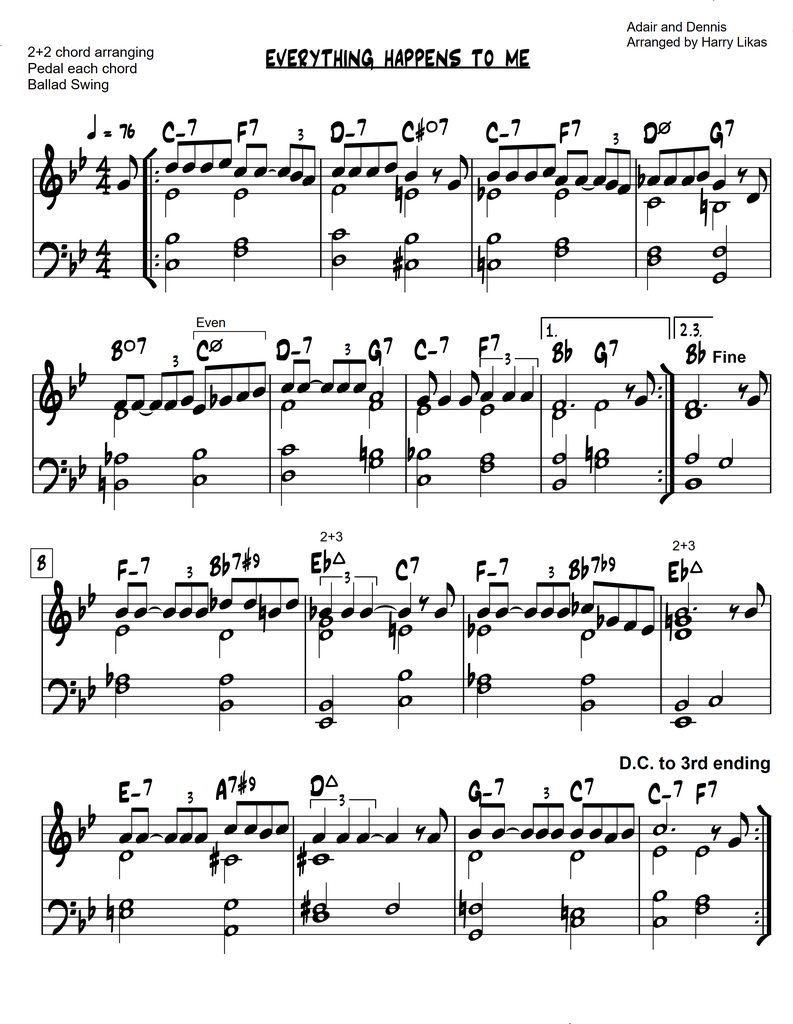I’ve arranged "Everything Happens To You" for solo piano using my 2+2 chord arranging method.
Thelonious Monk often used 2+2 voicings, particularly in the first six bars of "Everything Happens To Me" before gradually adding more notes. He frequently returned to the 2+2 style, and you can observe how the left hand often remained relatively static in this transcription:
This is one of over 1,000 arrangements I’ve created, most of which follow the 2+2 chord arranging approach. These arrangements cover nearly every tune in The Real Book and adhere to a few simple rules, providing a strong foundation for players. For beginners and intermediate students, the 2+2 method offers a clear and manageable approach to chord arranging. By focusing on two notes in each hand, students can avoid the complexity of more advanced voicings and concentrate on developing their spontaneous voicing skills. This simplified approach builds confidence and encourages consistent practice, making it easier for students to progress and explore more complex arrangements over time. As students advance, they are encouraged to enhance their arrangements by adding notes and fills, allowing each piece to become uniquely their own.
Explore 1,000 Arrangements of Standards at www.patreon.com/HarryLikas
As the technical editor for Mark Levine's The Jazz Theory Book and a collaborator on The Jazz Piano Book, I bring decades of jazz expertise to every arrangement.
